We continue our series of articles on the Algarve with a region that gave us a bit of a run for our money (not because of the region itself, I assure you, but more with our dog). 😉 First stops on our road trip in Portugal—we’re taking you on a little tour of Alcoutim, the Cacela Velha beach, and the adorable small town of Tavira.
Visit Alcoutim
We arrived in Portugal from Andalusia, just after crossing the Guadiana Bridge that marks the border between Spain and Portugal. We then headed a bit further north toward the charming little village of Alcoutim. The unique feature of this lovely white village (which actually resembles those in Andalusia) is probably its immediate proximity to Spain. Located on the banks of the Guadiana River, the village is literally opposite Sanlúcar de Guadiana, which is just 100 meters away on the other side of the riverbank.
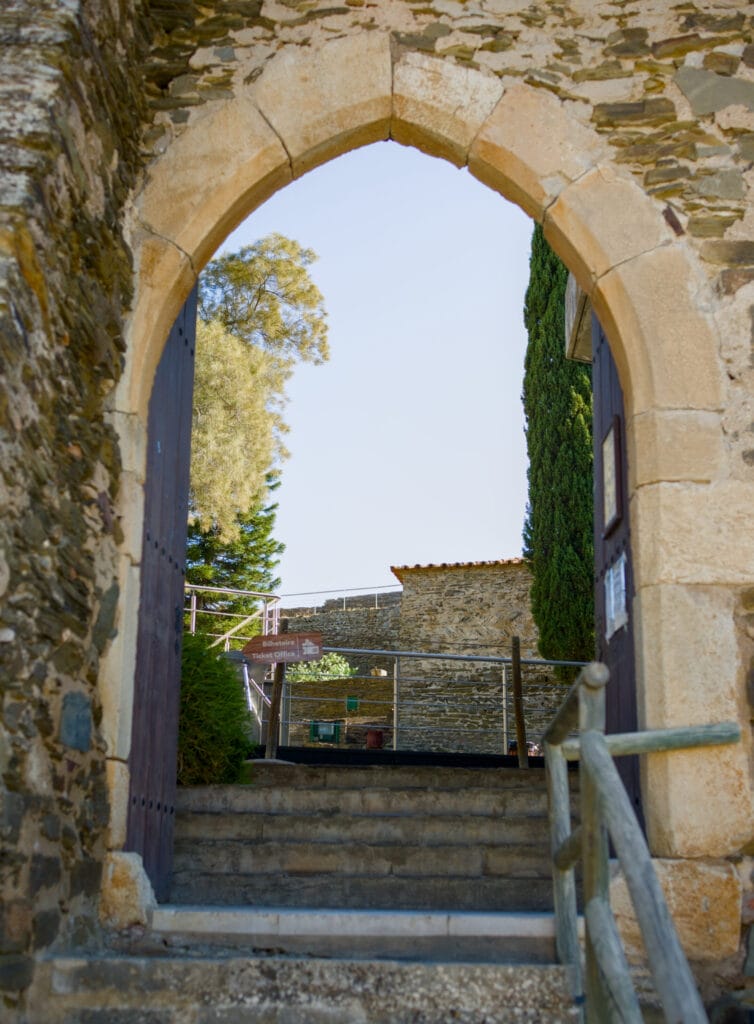
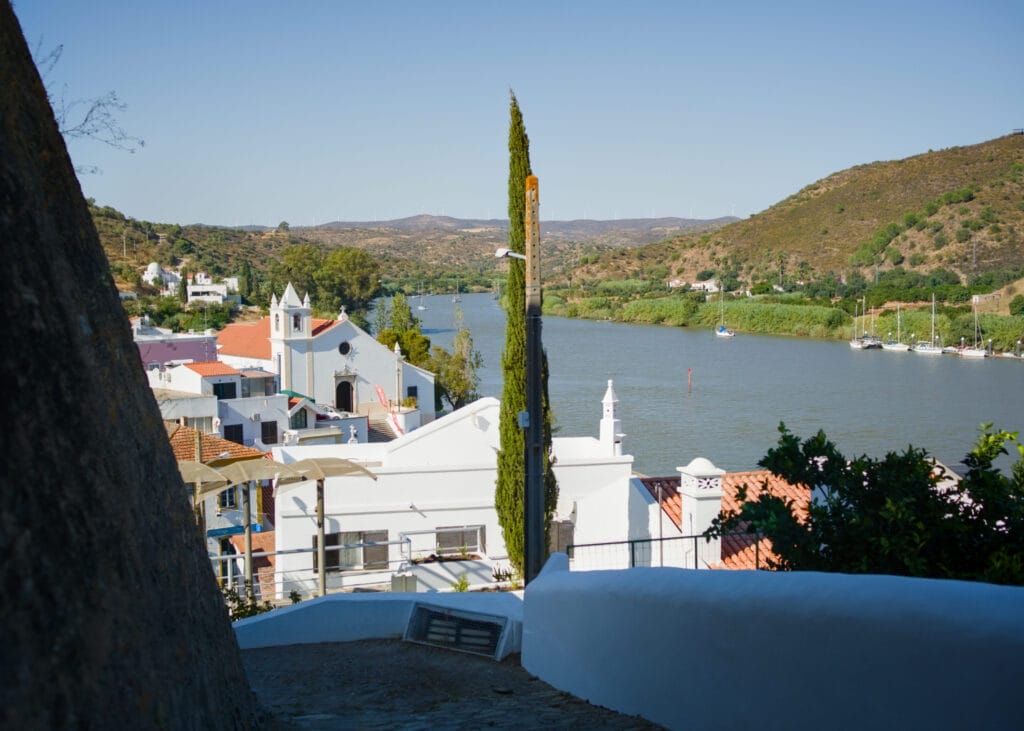
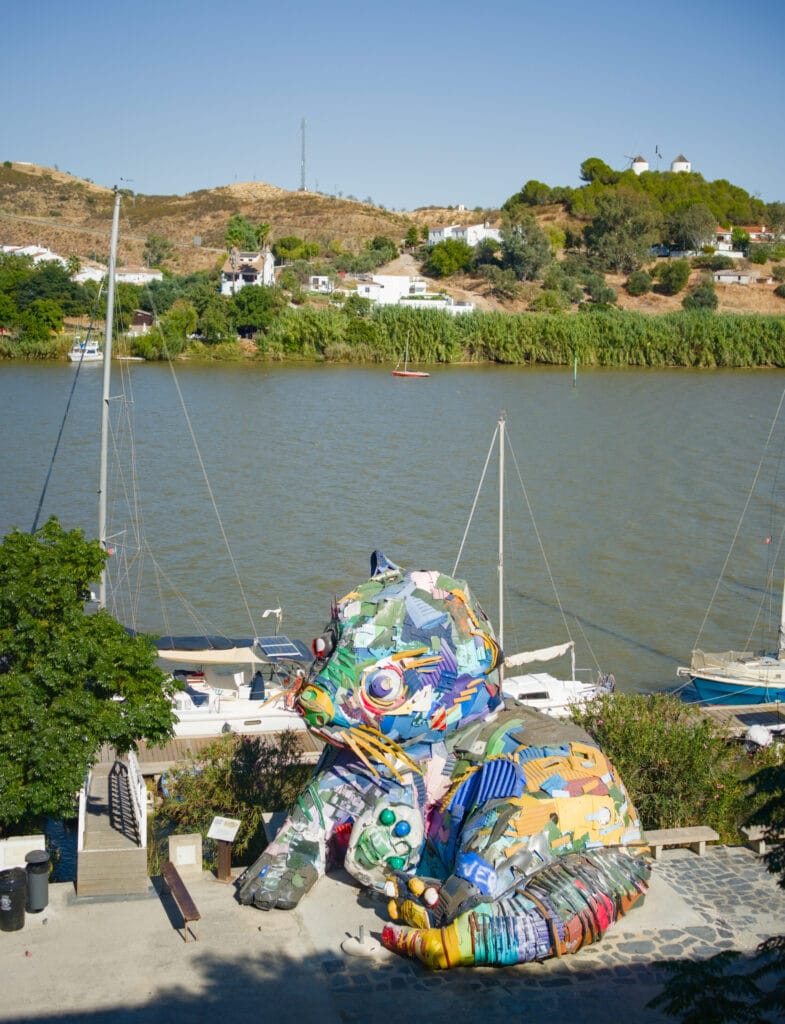


The village is really small, and it won’t be hard for you to walk around it. The charming white houses contrast with the beautiful castle located right in the heart of the village. You can visit this 16th-century castle for a modest fee of €2.50, which also grants access to the archaeology museum as well as an exhibition in the Santo Antonio chapel.

Walk to the ruins of the castle overlooking the Guadiana River
In stark contrast to the well-preserved castle located in the center of the village, you can also take a short walk toward the ruins of the old castle, which are a few hundred meters north of the village.
This ancient fortress was built during the pre-Roman or protohistoric period (probably between the 8th and 4th centuries BC).
Excavations have revealed traces of Roman and Islamic occupation, proving that the site served as a strategic control point for centuries. From the top of the hill, the view of the Guadiana is breathtaking — it’s easy to see why this vantage point was chosen: it offered an ideal position to monitor the natural border between Portugal and Spain (long before these countries were defined as such).

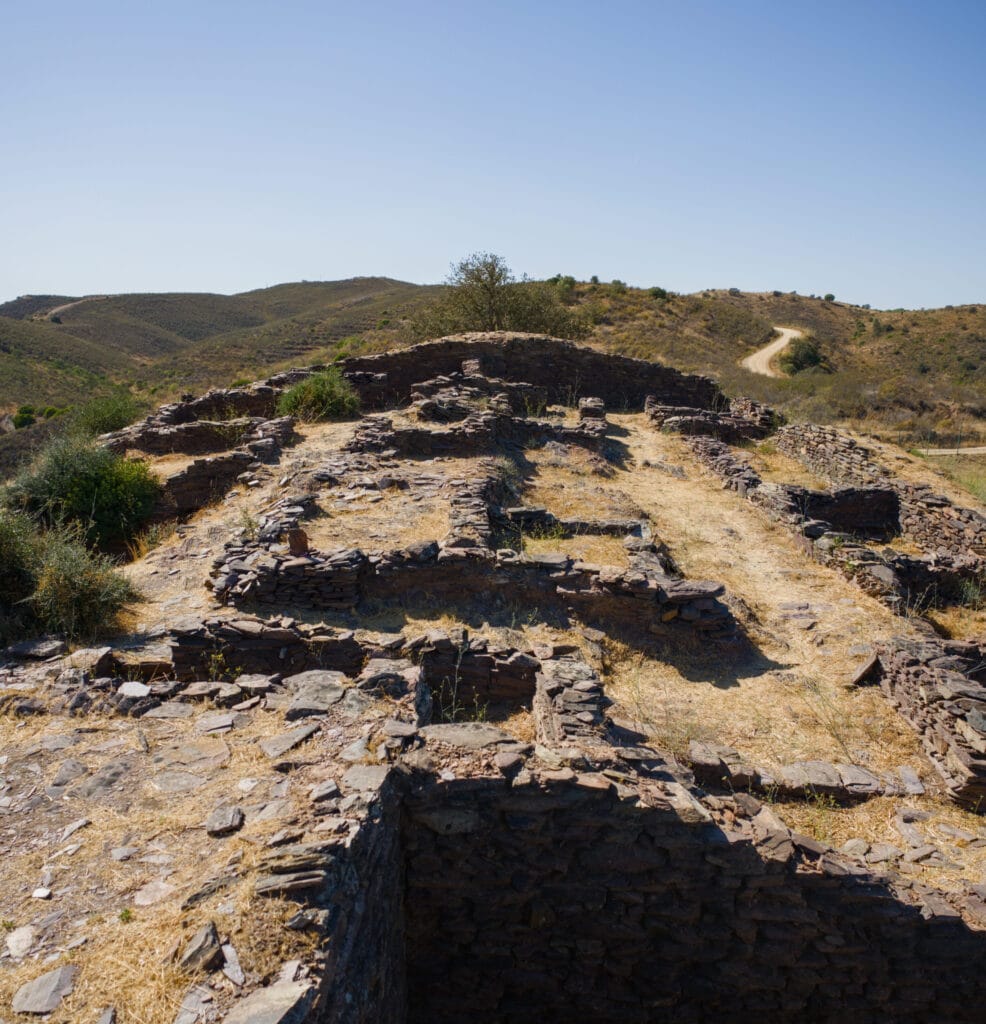
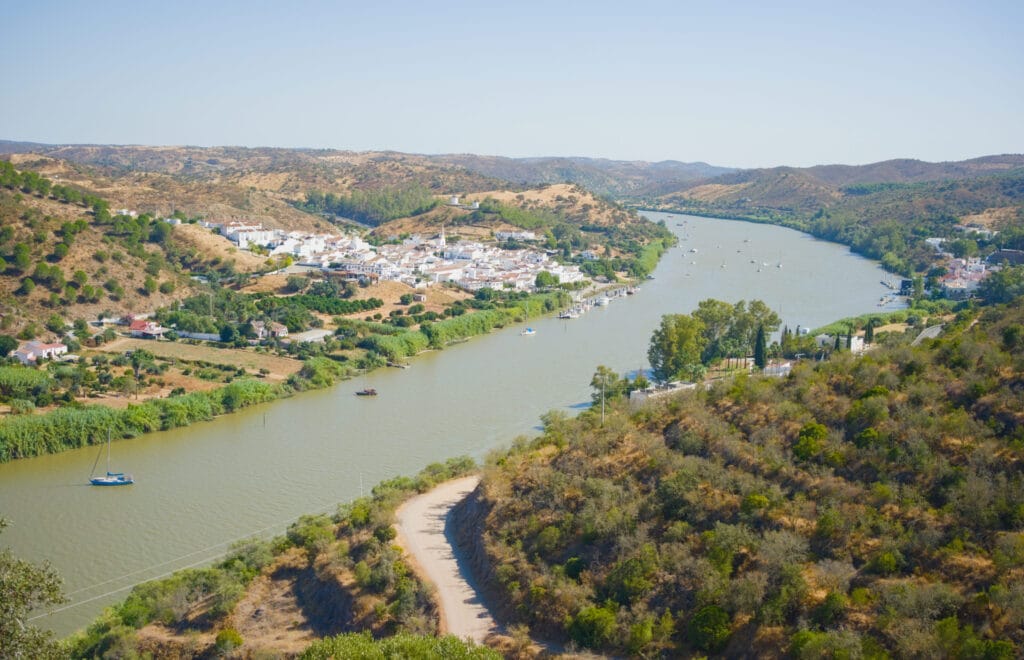
Today, only a few stone walls, foundations, and fragments of towers remain (don’t expect a castle), but the view from up there is truly breathtaking!
Here’s the map of the walk below:
After your walk, don’t miss the small Pego Fundo riverside beach, which is just before the village when coming back from the ruins. This beach, set up along a bend in the Guadiana River, offers clear, calm water, perfect for cooling off on hot summer days. However, be careful—dogs are not allowed (so we didn’t stop there). 😉
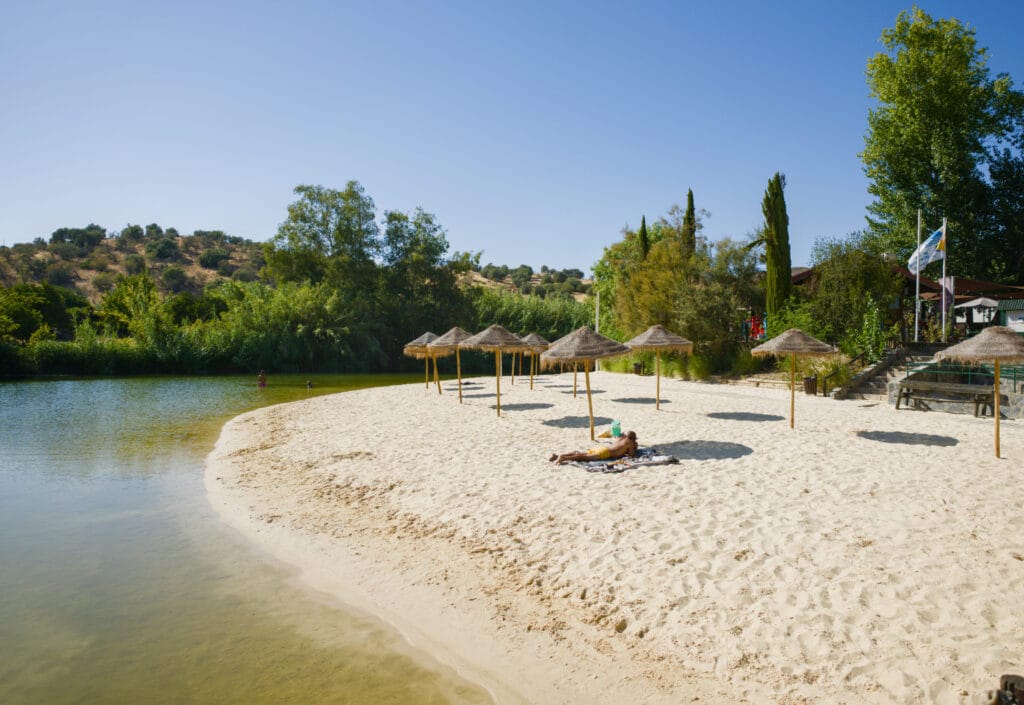
Discover the world’s only cross-border zip line
Here’s a little fun fact: Alcoutim is home to the only cross-border zip line in the world. Personally, it’s not really my thing (I much prefer solid ground). But we found the idea pretty amusing. The zip line is 750 meters long and will take you across the Guadiana River, starting from Portugal and ending in Spain. Another fun fact: since Spain and Portugal are in different time zones, when you arrive in Spain, you’ll have “gained” an hour. 🙂 The crossing costs €25 and can be booked directly on limitezero.com (or on-site).
Follow the M507 road
Leaving Alcoutim, we read that taking the M507 route was worth it, and we can confirm: it really is a fantastic route! However, I should also warn you, there aren’t many spots to stop and take photos (which is why there are so few images). But if you’re on a road trip, we highly recommend following this route for one of your journeys.
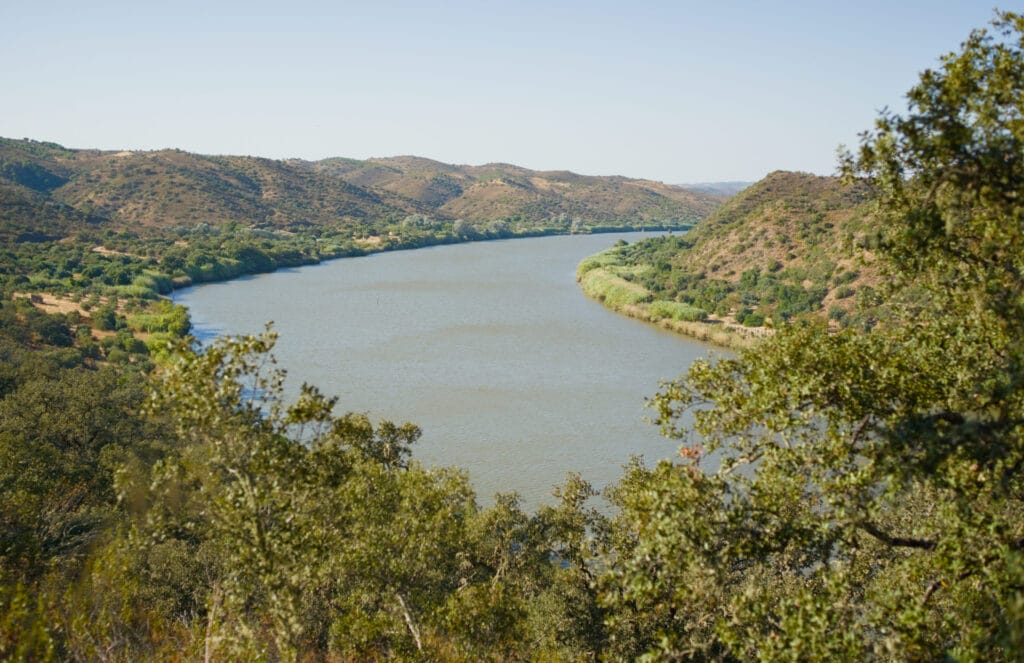
For our part, we took this route from Alcoutim to Foz de Odeleite, stopping briefly at the Pontal Viewpoint (the viewpoint in the photo above), then we headed back to the coast to enjoy the “cooler” air. Yes, by the end of September, we were quite surprised by the temperatures… While it was about 32°C on the coast, the inland areas were nearly 40°C at the time of our visit. Honestly, it definitely discouraged us from staying longer (but apparently, it was an exceptional heatwave for the season).
Cacela Velha
The day after we arrived in the Algarve, we came to explore Cacela Velha, a small village perched above the Ria Formosa lagoon.
Cacela Velha is often mentioned as one of the most charming and well-preserved villages in the Algarve, in southern Portugal. But, to be honest, it’s really just a tiny hamlet (with a huge parking lot that is absolutely disproportionate to the size of the village). We arrived early and found the place very peculiar… We were virtually alone in the world, and all the shutters were closed.
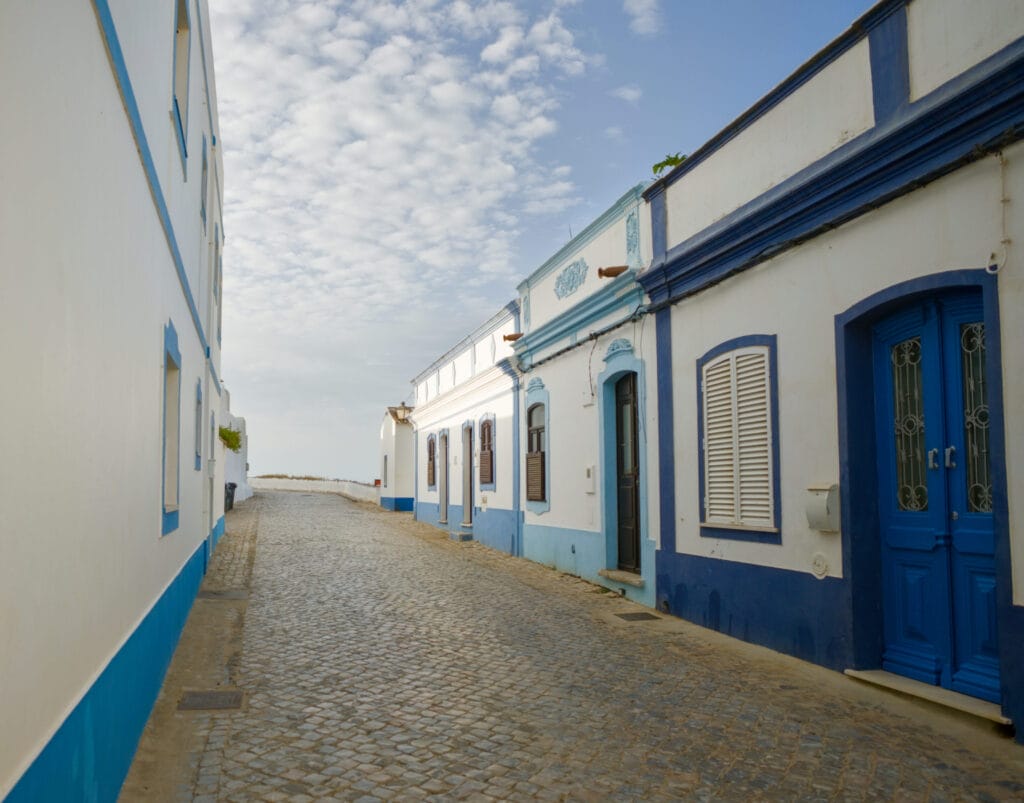
Walking around the village will literally take you less than 15 minutes…
But the main attraction of Cacela Velha is especially the stunning views of the sea and the sandbanks whose shapes change with the tides.
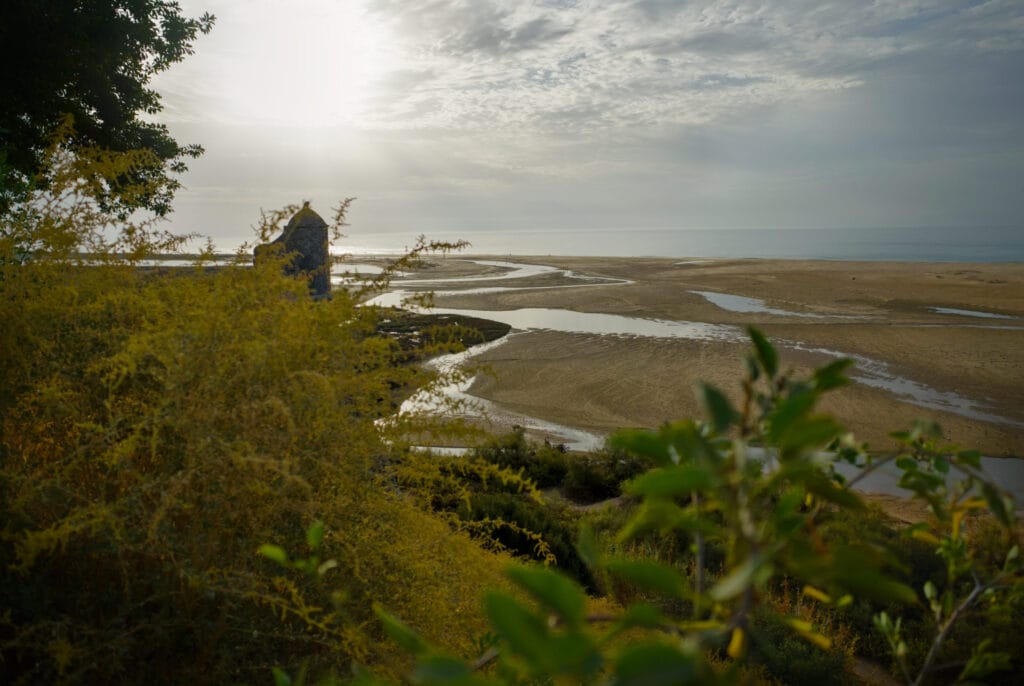
If you read us from time to time, you’ll easily suspect that we haven’t just been enjoying the view… Of course, we also decided to go for a little walk!
Our hiking itinerary in Cacela Velha
For our walk today, we didn’t have any particular goal other than stretching the dog’s legs and enjoying the beautiful scenery a little in the early morning.
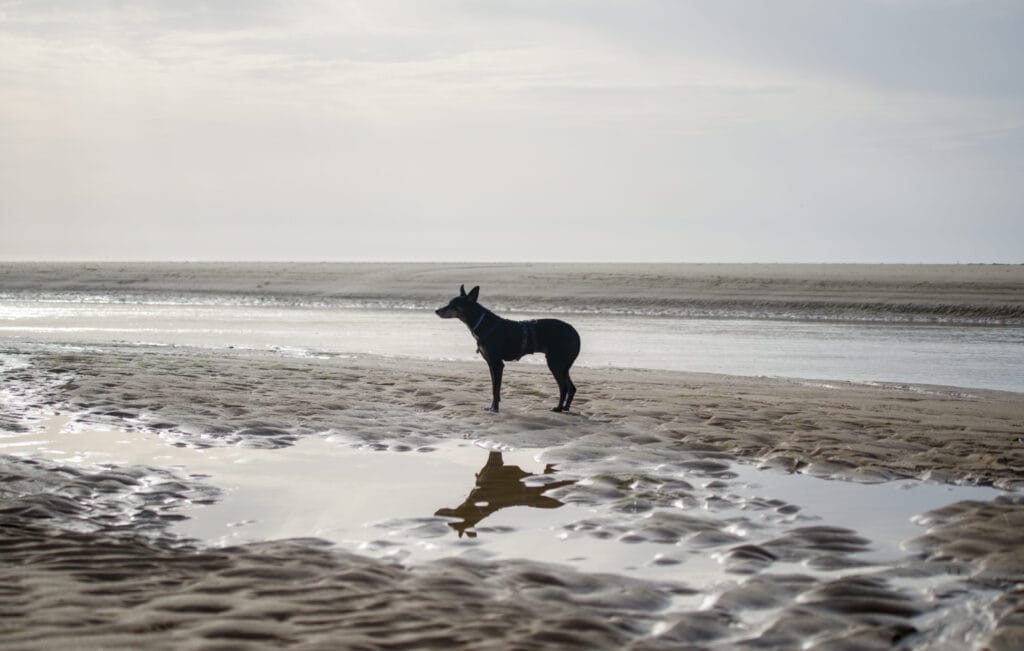
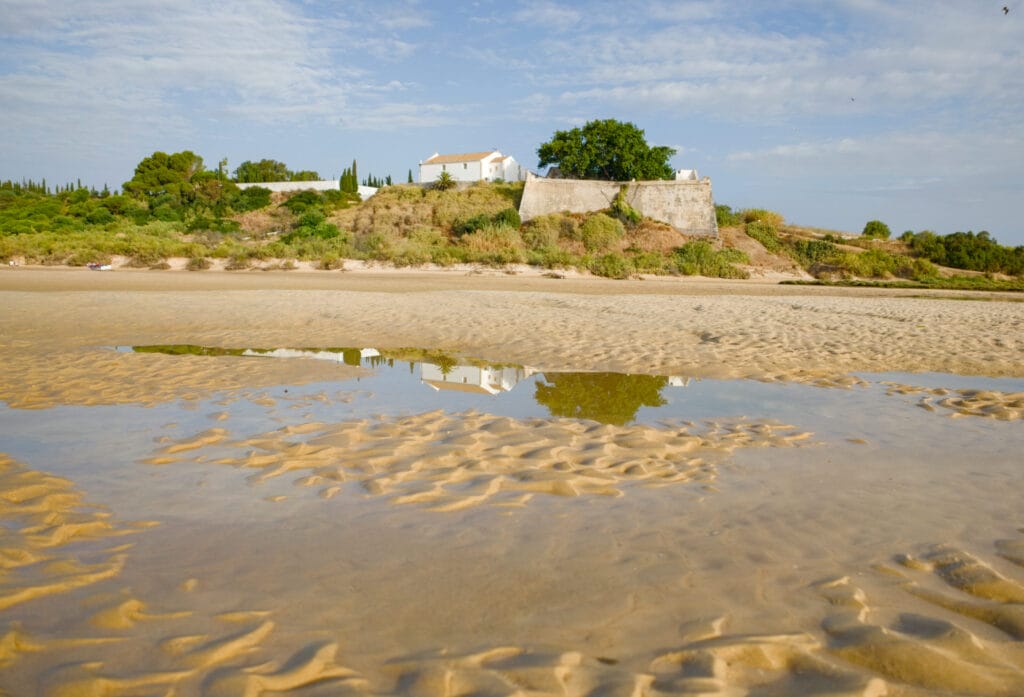
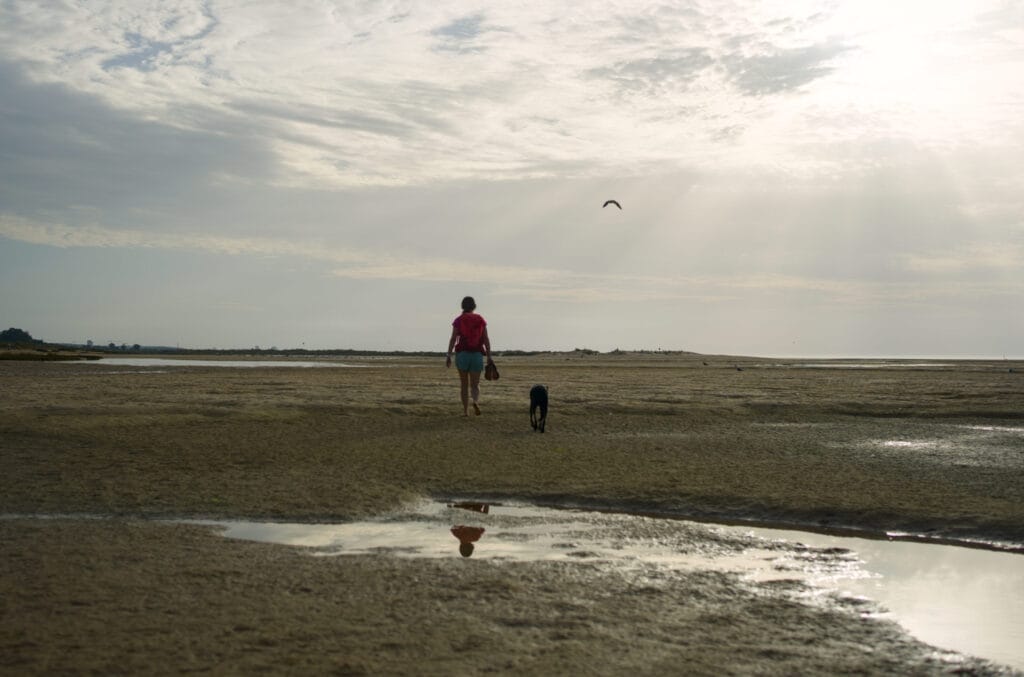
We were lucky with our visiting schedule and arrived during low tide. This allowed us to take the stairs on the right of Cacela Velha to reach the beach. Below, I’ve included a map of the walk, although the route is quite approximate, and your path will obviously depend on the tide conditions. 😉
The above route is about 5 km, but that’s a rough estimate. The exact distance will depend on the tide… Essentially, at low tide, you can head to the left following the sea, then resume the coastal trail to return to your starting point whenever you wish.
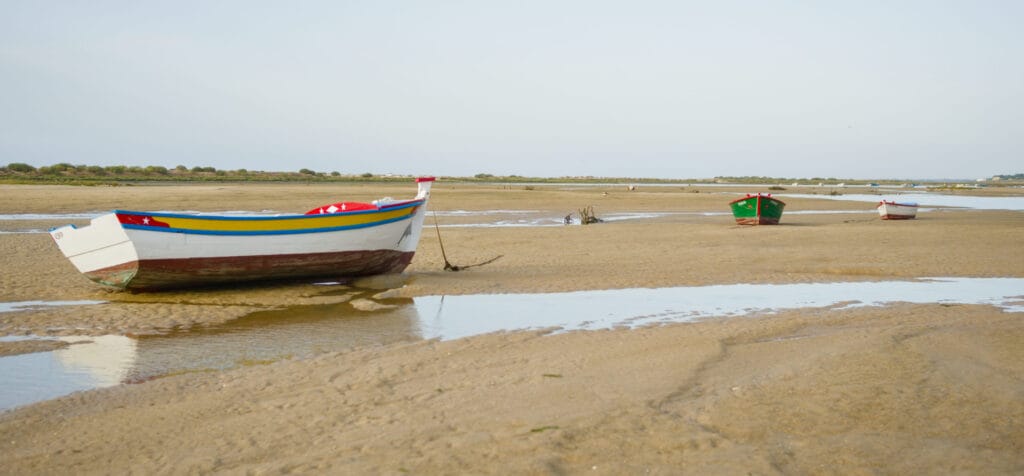

For the way back from the hike, we took an “official” trail that’s accessible even at high tide. It runs alongside fences of private properties and offers a nice view of Cacela Velha Beach from a slightly higher vantage point. I put quotes around “above” because we’re only about ten meters higher. But it’s also less tiring to walk on a path than in the sand… because yes, the entire first part of the hike was on the beach, so you have to account for a bit more time, as walking on soft, damp sand isn’t always straightforward.
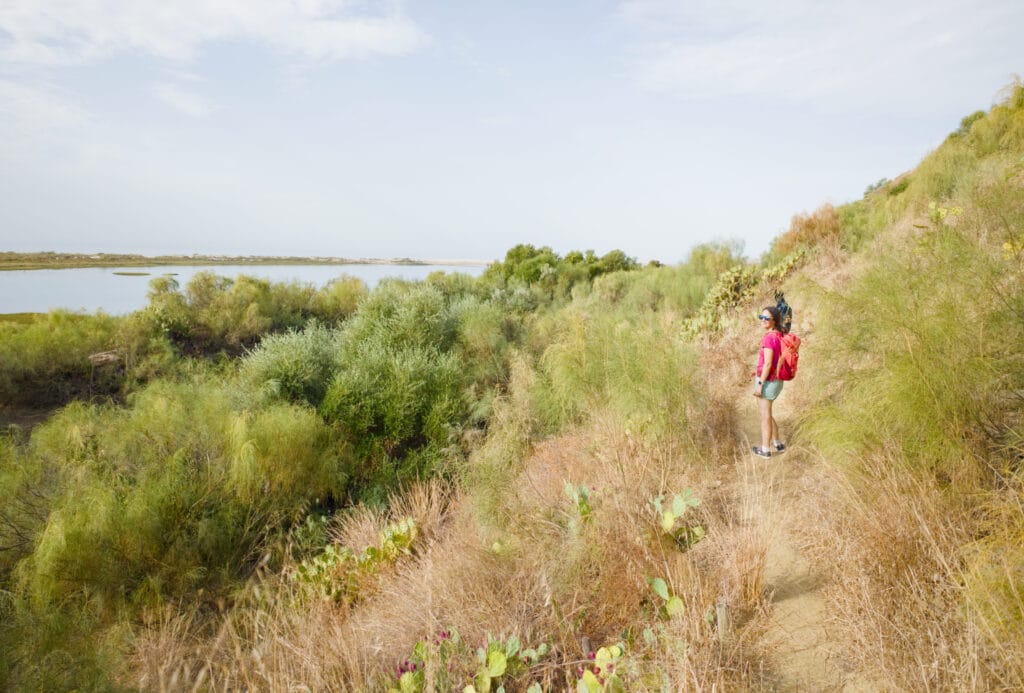
At the end of the trail, we return to the outskirts of the village. Here, a path leads directly to the village, but it was closed due to a risk of landslides when we passed by, so we went back onto the main road and then reached the parking lot from there.

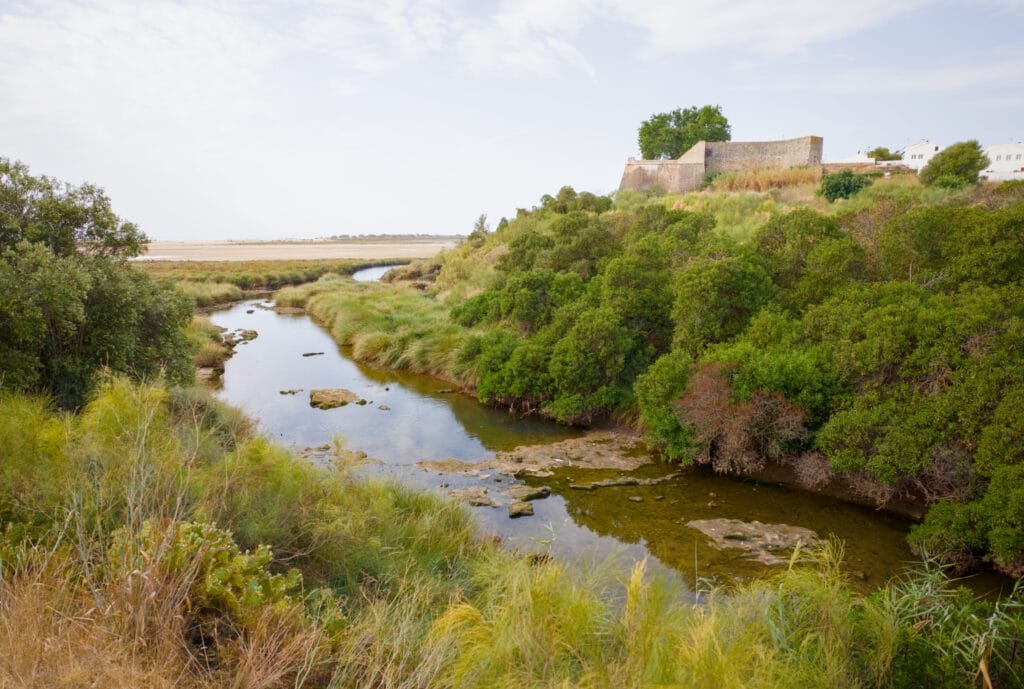

P.S.: Even at low tide, be prepared to possibly take off your shoes in some spots to cross a few small channels of water (maximum 10 cm deep).
I would love to tell you that we are perfectly organized people and that we always plan everything in advance… but the truth is, the sea and we are two different things. We’re definitely more mountain-minded, so tides are a phenomenon we tend to “forget” about. We were really lucky to hit the right time… But keep in mind, if you want to follow the same route we did, it’s best to make sure you’re only going at low tide (or close to it). 😉 To check tide schedules, you can visit Tidecharts.

Visit Tavira : what to see in a day
It was barely 10:30 in the morning when we finished our little walk in Cacela Velha, so we took advantage of being nearby to go explore Tavira.
Located along the Gilão River, Tavira is a small town often described as being away from the hustle and bustle of more touristy beach resorts.




For our visit to Tavira, we hadn’t made any grand plans… our idea was simply to stroll through the cobbled streets, admire the azulejos, cross the Roman bridge, and go see the castle. 😉 But when we arrived, we were starving, so we first looked for a place to eat.

As we headed towards downtown, we decided to stop at Cafetaria Originato. The interior looked cool, and most importantly, they are dog-friendly (we’ll get into that in a review article, but it’s not necessarily that common in Portugal). Well, the least we can say is that we absolutely do not regret this spontaneous discovery! We had a great brunch, the vibe of the cafe is super cozy, and the prices are quite reasonable. If you’re visiting Tavira, we highly recommend stopping by for a slice of tart, a brunch, or just a good cup of coffee!
Once our stomachs were nicely filled, we began our tour of the city proper. Tavira is definitely a place where life feels “good.” There’s something in the atmosphere that makes you feel truly at peace. The narrow cobblestone streets wind through the town, revealing lots of charming little flower-filled squares and houses with colorful facades.



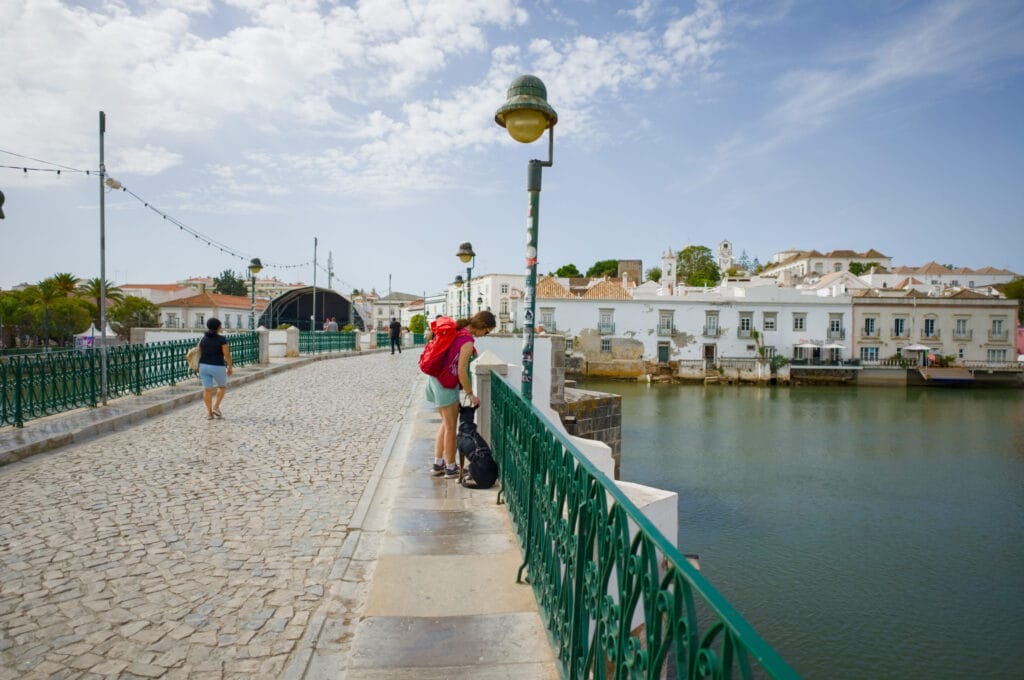
If you’re coming to discover Tavira, here’s a small list of places we recommend you don’t miss:
- Praça da República is somewhat of a central point in the city, and you’re almost bound to pass through it. There are lots of little shops, restaurants, and cafés all around it.
- The ancient Roman bridge that connects the two parts of the old town and crosses over the Gilao River.
- Climb up to Tavira Castle and explore the beautiful gardens. We also recommend climbing the main tower to enjoy an almost 360° view over the city’s rooftops.
- We really liked Jardim da Alagoa, a small square located a few steps from the Roman bridge.
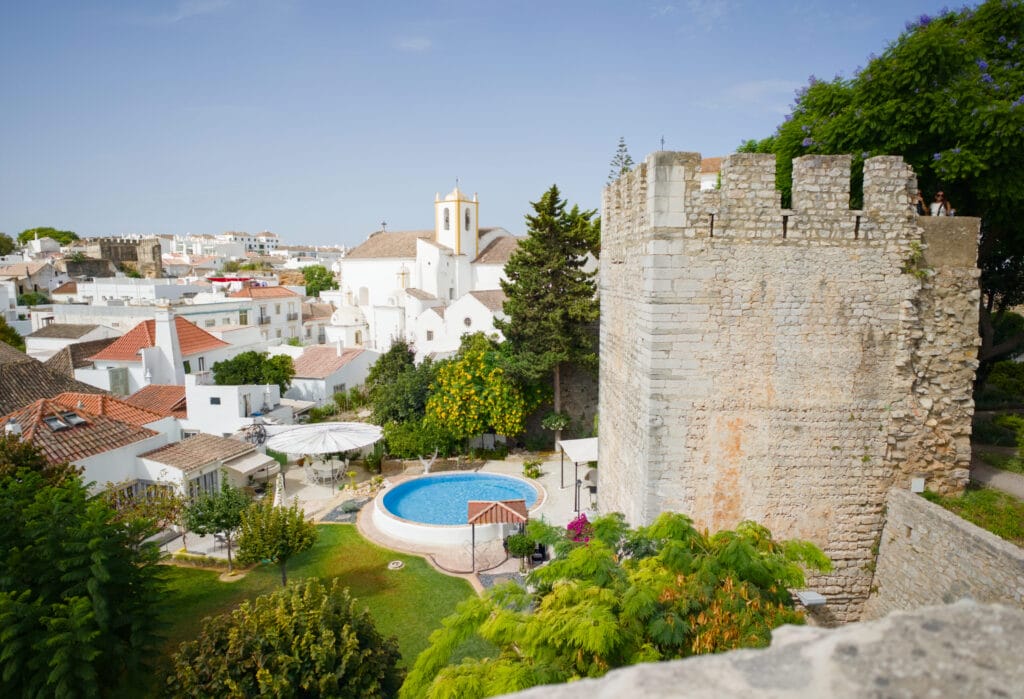
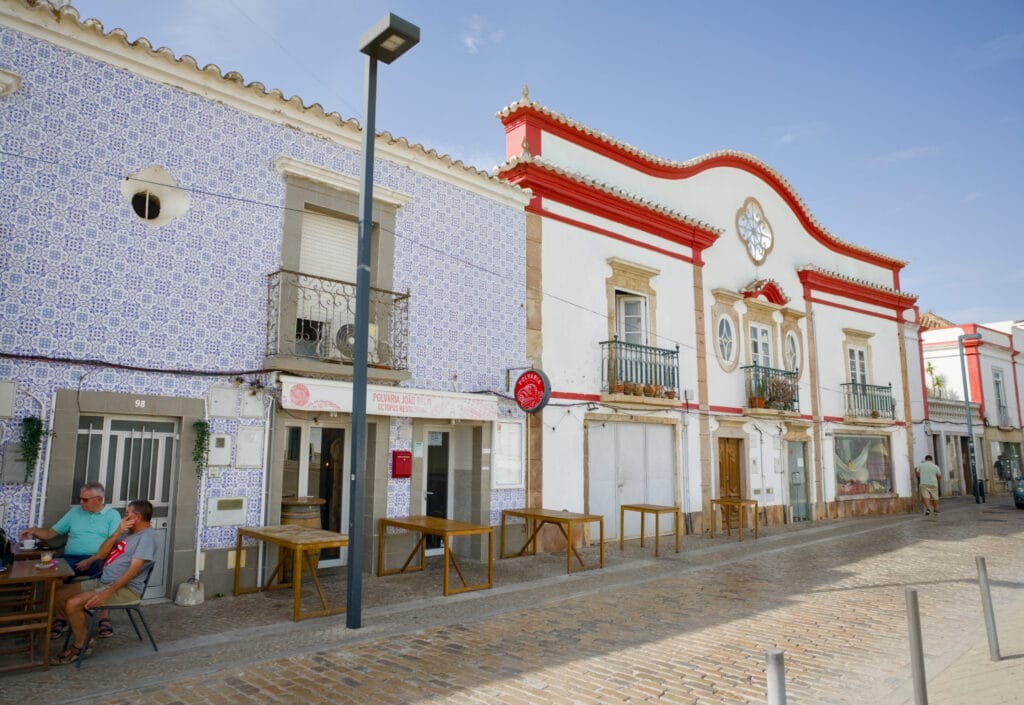
- Visit the Mercado da Ribeira, a large covered market located right next to the Gilao River. Open every day (except Sundays), it’s the perfect place to buy fresh fruit, vegetables, and fish.
- We also heard great things about the beautiful interior of the Church of Mercy (Igreja da Misericórdia). The interior is apparently beautifully decorated with blue and white azulejos depicting scenes. Admission costs €3 and you can also climb one of the towers. We skipped this visit because Winchy started to have trouble walking, so we cut our visit short (more on that in a moment).
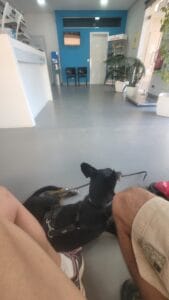
The end of this day didn’t quite happen the way we would have hoped… While we were sightseeing in Tavira, Winchy (our dog) started limping badly—like he was struggling to stand. Anyway, since it was the first time he’d done something like that, we cut our visit short and rushed to the vet in Olhão. By the way, if you’re looking for one, we found the team at Inemvet to be very friendly and, above all, they were adorable for taking us in immediately. The X-rays didn’t show much, and we left with anti-inflammatories and a bill of 170 euros. The next day, the little guy was bouncing around as if nothing had happened! We’ll never know if he had a temporary tweak or if he was just fed up with city visits, haha.
Praia do Barril – a highlight we’ve sadly missed
I’ll end this article with the last place we had initially on our list for the day. Winchy’s limping ended up preventing us from stopping there (we really didn’t want to put him through that), but if you’re in the area, we think it might be worth a visit.
Barril Beach is located on Tavira Island in the heart of the Ria Formosa Natural Park. The beach is known for its anchor cemetery, a remnant from a time when the area was used by fishermen to set out to sea and catch tuna.
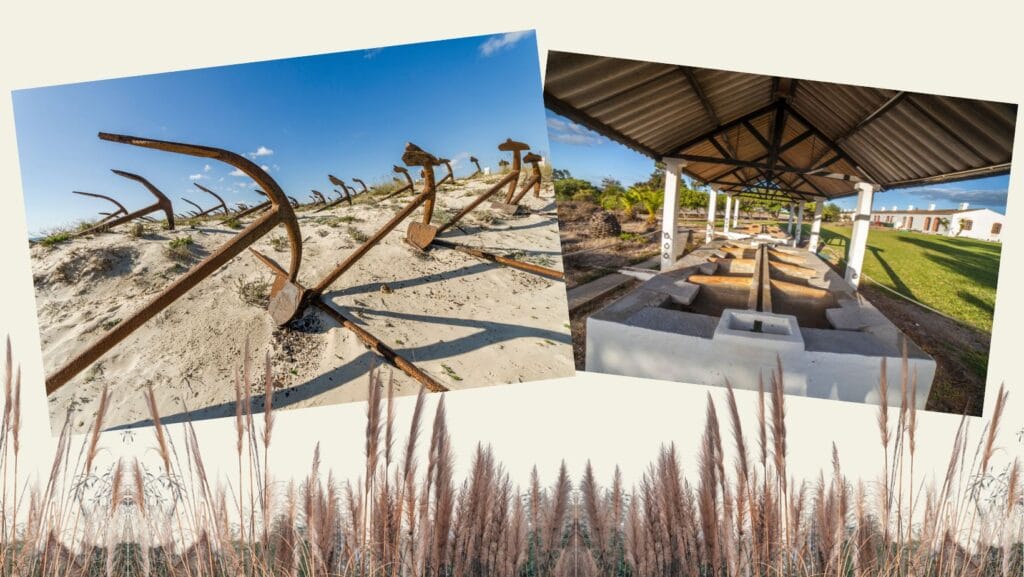
To access the beach, you basically have two options. But in both cases, you’ll need to park in the small village of Pedras del Rei. From there, you have a choice:
- Walk the 1.5 km from the parking lot to the beach along a path that runs alongside the railroad tracks (about a 20-minute walk).
- Take the tourist train (€2 per trip), which will take you to the same place in less than 10 minutes.
At the beach, you’ll probably notice lots of buildings. These were used by fishermen during the summer season, but today they have been transformed into shops and restaurants.
The biggest advantage of Tavira Island is that the beach stretch is enormous! In total, Tavira Island is 11 km long, which means that if you’re willing to walk a bit, you’ll have no trouble feeling like you’re completely alone in the world, even during the “high season.” Barril Beach is roughly in the middle, making it a pretty ideal starting point to explore either side. Just so you know: if you decide to head to the right (facing the sea), don’t be surprised to arrive at a very famous nudist beach. 😉
Anyway, we would have loved to tell you more about this place, which looks truly breathtaking, but hopefully next time!
This article contains affiliate links to AllTrails, GetYourGuide. What does that mean? It means that if you decide to use our links, we will earn a small commission. Of course, you won’t pay anything extra by using our links, but you’ll be helping us support the creation of free, independent content that is regularly updated. Thank you for your support.
To find all of our articles about the Algarve, click here.
See you soon for the rest of our road trip 🙂


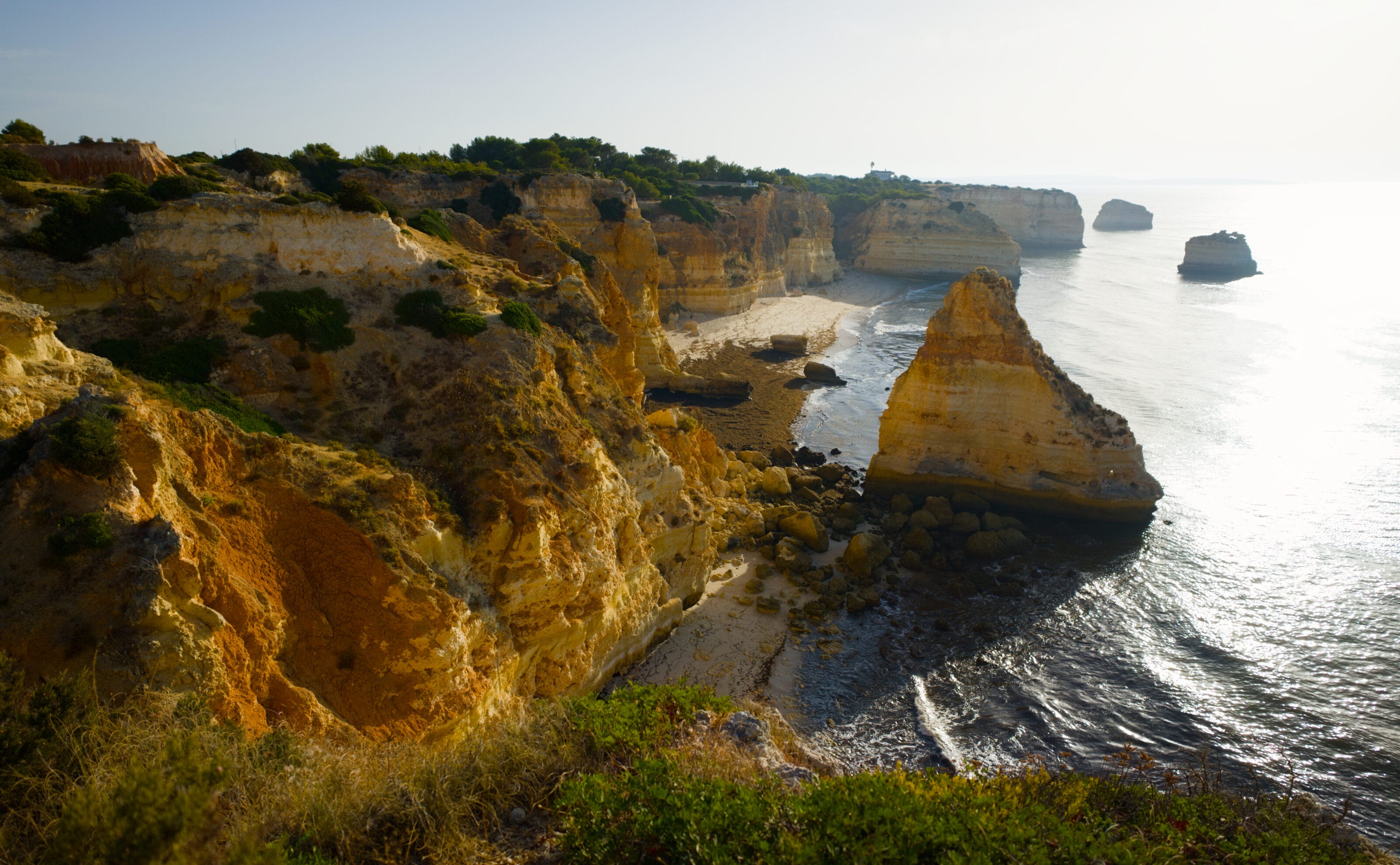
Join the discussion